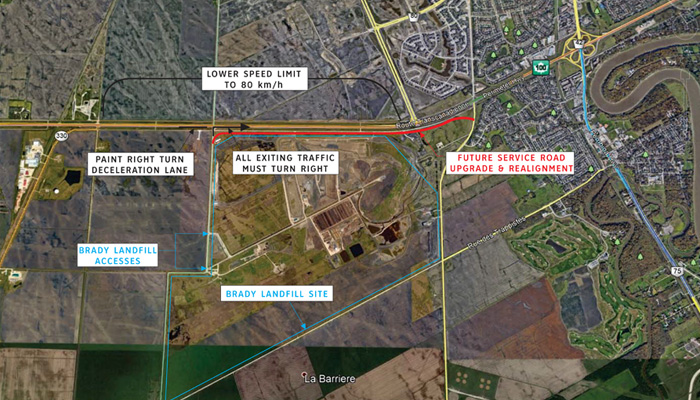The Manitoba government is introducing further safety measures on Winnipeg’s South Perimeter Highway (PTH 101).
“These are significant changes meant to improve safety for drivers who need to access the Brady Road Landfill and those who drive through the area,” said Infrastructure Minister Ron Schuler. “We understand these changes may be disruptive to some drivers, but we are still seeing too many collisions and near-misses in the area and need to take further steps to make the area safer in the interim while we build toward a long-term solution.”
Approximately 800 vehicles use the South Perimeter Highway daily to access the City of Winnipeg’s Brady Road Landfill. As this is the major entrance into the landfill, it is not possible to close the turnoff at this time. The province is working to engineer a permanent service road off Waverley Street so it can close the South Perimeter Highway turnoff onto Brady Road by fall 2020.
In the interim, the minister announced implementation of the following safety improvements:
- reduced speed limit to 80 km/h between PR 330 and Kenaston Boulevard;
- creation of a deceleration zone on the paved shoulder west of the Brady Road turnoff;
- no left turns off Brady Road westbound onto the Perimeter Highway; and
- temporary placement of message boards and speed reader boards approaching the turnoff.
In October 2018, the province announced the South Perimeter Highway Safety Plan at a cost of $19 million over three years. Proposed changes will affect median openings and access at 24 intersections, some of which will be closed, and service road improvements including the safer connection of Brady Road to the Perimeter Highway.
In summer 2019, the province blocked access to Brady Road north of the Perimeter Highway as part of its action plan to reduce the number of entry points to the highway.
“The South Perimeter Highway Safety Plan aims to improve safety as well as traffic flow along the highway and in local areas,” said Schuler. “Once work is completed, we will examine locations that continue to see a high frequency of collisions on an ongoing basis to look for ways to further improve safety.”
Design work continues on the permanent service road, which will require the relocation of services. The road will be built to National Roads and Transportation Association of Canada (RTAC) standards to withstand a high volume of traffic, the minister said.
While a dirt service road exists in the area, it is not built to handle heavy truck traffic or withstand challenging weather conditions and is not a safe or suitable replacement, the minister noted.



